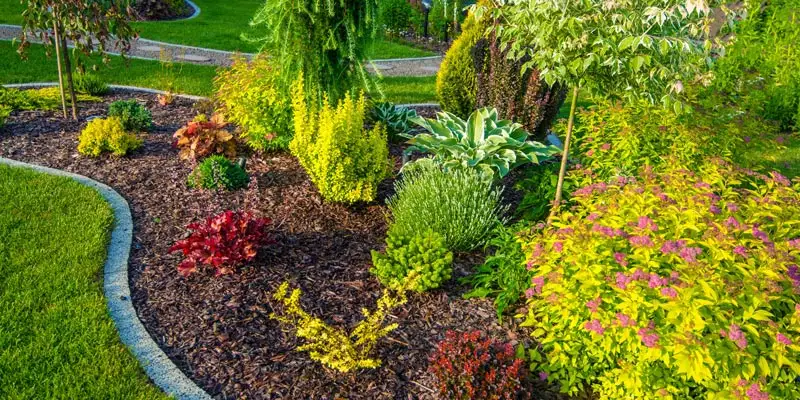8 Simple Techniques For Landscape Design
8 Simple Techniques For Landscape Design
Blog Article
More About Landscape Design
Table of ContentsLandscape Design for DummiesSome Known Facts About Landscape Design.What Does Landscape Design Mean?The Definitive Guide to Landscape Design
When creating a domestic landscape, the most essential step is to put an intend on paper. Establishing a master plan will conserve you money and time and is a lot more most likely to cause an effective layout. A plan of attack is established with the 'style process': a step-by-step method that takes into consideration the environmental conditions, your desires, and the elements and principles of layout.The 5 steps of the style process include: 1) carrying out a site supply and analysis, 2) determining your needs, 3) producing useful layouts, 4) establishing conceptual design plans, and 5) drawing a final style plan. The first 3 steps establish the aesthetic, useful, and gardening needs for the style. The last 2 steps then use those demands to the production of the final landscape strategy.
This is a crucial step for both plant choice and placement and locating family activities and features. It is necessary due to the fact that the very same environment conditions that affect the plantstemperature, humidity, rain, wind, and sunlightalso impact you, the customer. The following step is to make a listing of your demands and desiresthis aids you determine exactly how your lawn and landscape will be used.
The functional representation is after that utilized to find the activity rooms on the site and from this diagram a theoretical strategy is developed. The last action is a last style that consists of all the hardscape and planting information that are needed for installment. Throughout the layout process there are ten crucial things to take into consideration: for plant choice and activity location by considering what you want and need to help identify shapes and organize rooms by marking task areas and relating to elements for both the setting and the user by utilizing massing and layering techniques such as transition locations and focal factors in the materials, the colors, and the surface area appearances for the growth and maintenance of plants by utilizing lasting design methods A complete inventory and analysis of the website is vital to figure out the environmental conditions for plant development and the best use the site.
The Only Guide to Landscape Design
The kind of soil identifies the nutrients and dampness available to the plants. It is constantly best to utilize plants that will certainly flourish in the existing dirt. Dirt can be changed, amendment is typically costly and a lot of times inefficient. Existing plants can offer clues to the dirt type. Where plants grow well, note the soil conditions and make use of plants go to the website with comparable growing demands.

Sun/shade patterns, the amount and length of direct exposure to sunlight or shade (Number 1), produce microclimates (occasionally called microhabitats) - Landscape Design. Recording website problems and existing vegetation on a base map will expose the location of microclimates in the yard. Plants normally fall under 1 or 2 of 4 microclimate categories-full sun, partial shade, color, and deep color
The Facts About Landscape Design Revealed
Utilities such as power lines, septic containers, underground energies and roofing system overhangs determine plant place. Utilize a land surveyor's plat of your home for the limits and location of your home.


Spending plan concerns consist of the products, first installment prices and the on-going maintenance prices. Determine the moment and cash you want to place into maintaining the plants and hardscape-be practical concerning your objectives and capability. Figure 3. Present use locations. Credit Report: Gail Hansen, UF/IFAS Number 4. Proposed use areas. Credit Score: Gail Hansen, UF/IFAS There are many different landscape layout styles- from straightforward to facility, but it is handy to select one to guide your plant and product choice.
Lots of people locate it practical to search in gardening magazines and publications for concepts. This is an excellent beginning, but understand that the yards in the photos were picked since they are superior examples. Take Visit Website a look at the photos with an important eye to gather concepts that you can adjust to your passion level, your budget plan and your website.
Choose if you want to open your lawn, close your yard, or a little of both, to these sights (Landscape Design). To put it simply, do you want the yard to confine the room around you and connect primarily to the residence, or do you want the yard to open sights and look exterior, associating to the surroundings? This will certainly provide you a beginning point to think of a theme
Not known Details About Landscape Design
This is called "local color", which suggests it fits with the environments. There are both type motifs and design motifs. Every garden should have a kind style, yet not all yards have a design theme. Actually, lots of residential yards have no specific style except to mix with your house by duplicating information from the architecture such as materials, color, and form.
In a kind motif the company and form of the rooms in the lawn is based either on the shape of the home, the form of the More about the author locations between your home and the residential or commercial property borders, or a favorite shape of the home owner. The form theme identifies the shape and organization (the layout) of the spaces and the web links between them.

Report this page